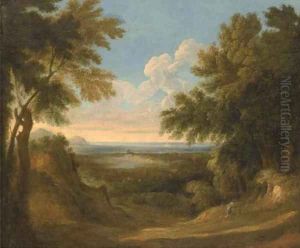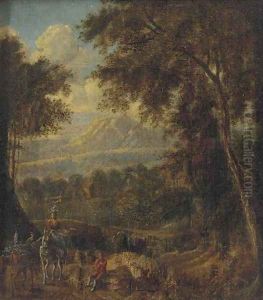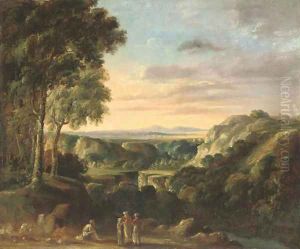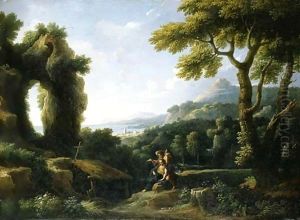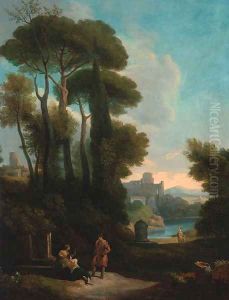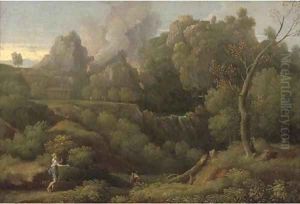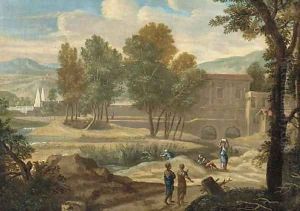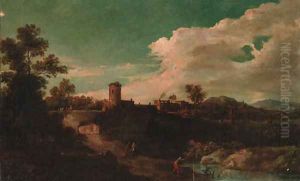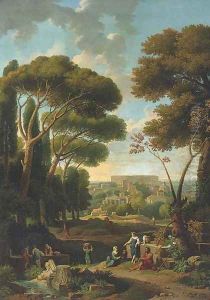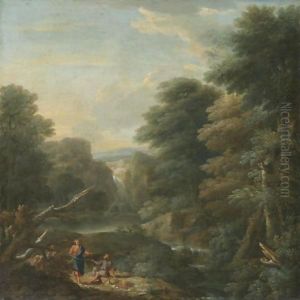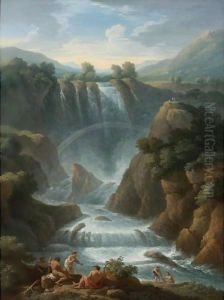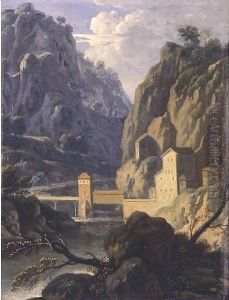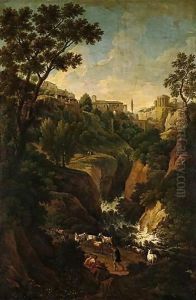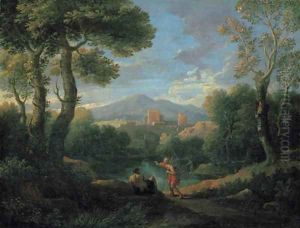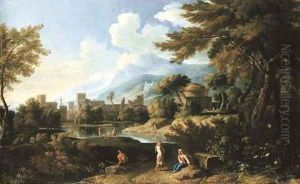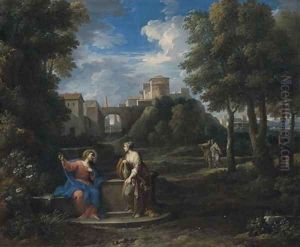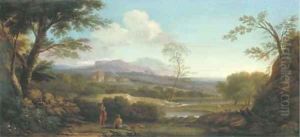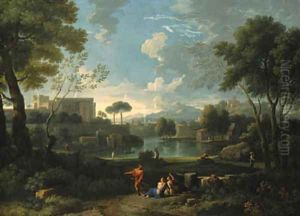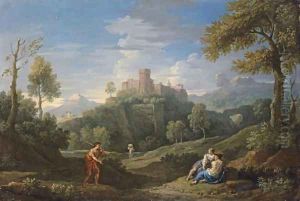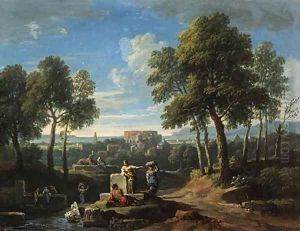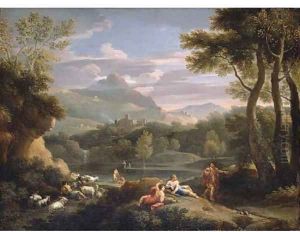Jan Frans Van Bloemen (Orizzonte) Paintings
Jan Frans van Bloemen, also known as Orizzonte, was a Flemish landscape painter born in Antwerp on May 12, 1662. He was one of three brothers who were all painters, and his nickname 'Orizzonte' or 'Horizon' reflects his specialization in crafting expansive and detailed landscape horizons. Van Bloemen was a part of the Roman school and is particularly noted for his skill in depicting the Roman Campagna, the area surrounding Rome.
Van Bloemen moved to Rome permanently around the year 1689, where he became part of the Bentvueghels, a society of mostly Dutch and Flemish artists working in Rome. It was a common practice within this group to adopt a nickname, which is how Van Bloemen came to be known as Orizzonte. His works were particularly influenced by the classical landscape painters Claude Lorrain and Gaspard Dughet, whose Arcadian landscapes were admired for their poetic and idealized representation of nature.
His landscapes are characterized by their tranquil and idyllic atmosphere, often featuring classical ruins, pastoral figures, and a soft, harmonious color palette. Van Bloemen's adeptness at atmospheric perspective greatly contributed to the sense of depth in his paintings. He often collaborated with other artists, adding landscape backgrounds to their figure compositions.
Jan Frans van Bloemen's contributions to landscape painting were significant, and his works were sought after by collectors and connoisseurs throughout Europe. His younger brother, Norbert van Bloemen, was also a painter, though he specialized in genre scenes and stayed in Northern Europe. His other brother, Pieter van Bloemen, known as 'Standaart', worked on both landscapes and animal scenes.
Jan Frans van Bloemen's legacy continued through his influence on other artists and his role in the development of the 18th-century Italianate landscape tradition. He remained active in Rome until his death on June 13, 1749. Today, his works can be found in many major museums across the world, celebrated for their serene beauty and technical skill.

